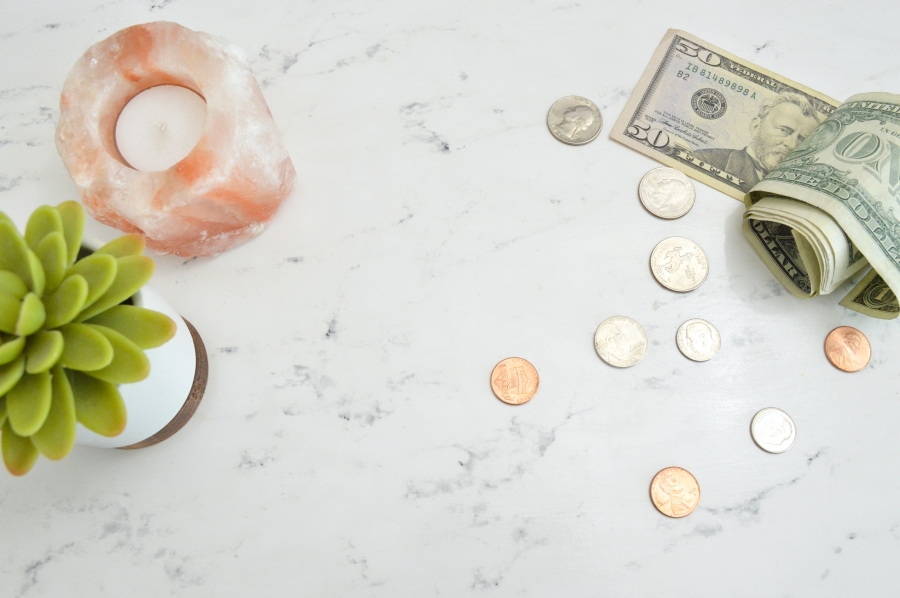We’ll cover the target returns passive investors can earn, how those returns are paid and share an investment technique for generating significant wealth over time
Some of the most compelling aspects of passively investing in real estate syndications are the returns investors can make and how those returns are paid.
Simply stated, recent syndicated deals in the market target annualized returns of 13-17%*
Now let’s talk about how that translates into real dollars, and freedom for your life.
*These returns are projections and past performance is no guarantee of future results.

Investors Are Paid in 2 Ways: Preferred Returns and Equity Splits
Investors make money from both the rental income (cash flow) the property produces throughout the duration of the investment, as well as from the upside profit made when property is sold at a higher value at the end.
Preferred Returns
Preferred returns (”Pref”) are cash dividends paid for the duration of the syndication project based upon the rental revenue that the multifamily apartment property generates from its tenants. It is typically between 6-9% annually, and is paid to the Limited Partner (LP) investors before any money is paid to the General Partners (GP). Most deals would distribute this cash to investors on a monthly or quarterly basis directly into their bank accounts.*
Basic Example: If an investor joins a syndicated deal as a passive LP, investing $100K and the preferred return is 8%, then she would receive $667 per month in their bank account ($8,000/12), which would amount to a total of $40K by the end of the 5 year project (the typical length of a syndicated deal).
*While preferred returns are commonly paid monthly or quarterly, this is not guaranteed. If the project requires additional reserves, or is not performing well, the GPs reserve the right to withhold the preferred distribution. In this case, it will accrue, and be paid out at a later period or when the property is sold.
Equity Splits and Profits From Sale
In a syndication, the GP and the LP own the property together. The common structure used to share this ownership is a “70/30 split. In this case, the LPs get 70% of the total equity (ownership) of the property for bringing the money, while the GP gets 30% of the equity for finding the deal and executing the business plan.
In most real estate syndications, the goal is to ultimately sell the investment property at the end of the project its new, higher valuation. At that time, the profits from sale are then split amongst the GPs and LPs based upon the equity split. At this point, the investor is paid based on what they own.
Basic Example: At the end of the business plan, the property is sold and the profit from the sale is approximately $5 Million. Of that profit, 70% or $3.5 Million, would be distributed amongst the LP investors based upon the amount of their original investment. The other 30% goes to the GPs. This is where the majority of an investor’s projected return comes from.

How Are These Returns Generated?
Preferred Returns
A multifamily apartment property generates revenue from it’s rental tenants, but also has other revenue streams like laundry, parking premiums and storage. These properties have costs, just like any other business, which include maintenance and utilities, capital expenditure for items like roofs and HVAC, leasing staff payrolls and marketing. The GP’s goal when they acquire one of these properties is ensure that revenues are optimized and costs are reduced. These strategies are spelled out in a comprehensive business plan, and are what generate the income that can then be distributed to the passive investors.
Profits At Sale
The bulk of value created in a multifamily syndication comes from appreciation of the property’s value, of which there are two kinds: forced appreciation and market appreciation.
Forced appreciation is a factor of a well-executed business plan operated by the GPs. This typically includes renovations made to the property, like fixing up the unit interiors and grounds. It also typically includes improving or adding amenities, like pools, dog parks, and other services like community programs. Finally, it includes “stabilization”, which means bringing occupancy and rents up to market levels and ensuring the tenant population is strong and likely to pay rent.
Another forced appreciation strategy is to reduce costs. This could be done by hiring a more effective property manager, billing back tenants for utilities, and introducing “green” initiatives that decrease water or electricity usage. Since the value of an apartment complex is determined by its profitability, this two-tiered approach: increasing revenue while bringing down costs, can dramatically increase market value.
Market appreciation occurs when the property’s value increases over time as a result of a strong local economy, positive population growth and favorable supply and demand characteristics, resulting in increased demand for rental apartments. Strongly underwritten deals don’t rely upon this type of appreciation for the deal to be successful because of the unpredictability of the future.

With these returns, how can I build real wealth?
The Power of Compounding
Most syndications require their passive investor to commit a minimum of $50K. With returns where they currently are, while attractive, it still isn’t even close to what most people need to replace their income or retire. The key to building real wealth through is a technique called compounding, with a basis in reinvesting your earnings.
If your current goal was to create an extra $1000 of more of passive income per month, and you have a total of $50K to invest, let’s see how you achieve this target with compounding, and what kind of time it would take to achieve that cash flow goal. We’ll also see how that investment performs in terms of total return.
How To Achieve $1000/Month, Compounding Your Investments Over Time
- If you invest $50K today: $50K generates = $333 in monthly cashflow*
- In 5 years, it will become: $100K
- If you re-invest the new total in similar deals: $100K generates = $666 monthly cash flow
- In 5 years from that point, $100K has the potential to become $200K.
- So, in 10 years you now have $200K. Reinvested in similar deals, it generates = $1333 in monthly cash flow.
If you continued to do this you, will have substantially increased your net worth and passive income in a relatively short period of time. Further, you can employ a compounding strategy and create significant wealth.
*This example is based upon an 8% preferred return and a 2x equity multiple. While this is reflective of the market and returns possible in Q1 of 2020, these projections are no guarantee of future results. Market conditions can and will change.

Here’s where compounding get’s really interesting…
If you keep following this compounding strategy, the initial seed capital of $50K can grown to retirement-quality wealth in a couple of decades. If you take the $200K you’d have earned in the first 10 year period and reinvest it in similar deals, in 5 more years it could be $400K. That $400K could double to $800K 5 years after that, and $1.6M in the subsequent 5 years.
In 30 years, a small investment of $50K could grow into a large sum of $3,200,000.
If that money was invested and earning an 8% prefferred return, that’s $256K/year in passive cash flow. See a simple breakdown of this compounding effect below.
Many people don’t realize the power of compounding and how small steps today could turn into monumental changes for your financial future and security down the line.
Here’s this schedule that simply illustrates the power of compounding, all things equal:
Today = $50,000
5 years = $100,000
10 years = $200,000
15 years = $400,000
20 years = $800,000
25 years = $1,600,000
30 years = $3,200,000
Real estate is not a get rich quick game. Just like everything else of real value in life, it takes time. But this example illustrates that the sooner you get started, the better.
*This example is based upon an 8% preferred return and a 2x equity multiple. While this is reflective of the market and returns possible in Q1 of 2020, these projections are no guarantee of future results. Market conditions can and will change.

Now Let’s Generate More Freedom In Your Life
Are you interested in investing or would like to learn more?
Akras Capital is a GP in select syndicated deals each year and we invite like-minded investors to join us. If you’d like to explore investing, or have questions, let’s start a conversation.
You can get started today by clicking the button below.
Here you can sign up for the Akras Insider, our monthly newsletter, easily connect with our team, and when ready, submit a simple investor application. Thanks, and we look forward to connecting with you!

